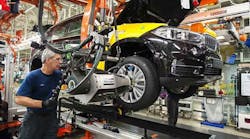A myriad of changes including economic, demographic, and technological shifts, are disrupting the manufacturing sector.
For this reason Manufacturers Alliance for Productivity and Innovation (MAPI) produced a new report, Manufacturing Megatrends, revealing how 81 senior executives are assessing the impact of disruptive megatrends on their businesses in 2015.
"The manufacturing world is being shaped by several new forces—IoT capabilities, the understanding of total cost of ownership, and the work–life balance expectations of millennial employees—and how companies respond will define their success," said Jenn Callaway, MAPI's director of councils and business research.
Key takeaways from survey:
Information is the New Currency
•Thanks to unparalleled access to information on pricing and profitability, three-quarters of executives report that understanding total cost of ownership had a positive impact on their business in 2015.
The New Workforce
•Labor markets are transforming—the manufacturing workforce is aging and it’s harder than ever before to attract talent. For nearly two-thirds of surveyed companies, access to skilled labor had a negative impact on their businesses last year.
Globalized Economic Risks & Opportunities
•With 45% of U.S. manufacturing revenue generated overseas, exposure to currency fluctuations, volatile energy and commodity prices, global supply chain disruptions, and regional economic uncertainty is at an all-time high. Economic and currency challenges took five of the top 10 spots on our list of factors having the most negative impact on manufacturers.
Technology’s Promise and Peril
•The digital revolution is delivering amazing opportunities for companies to innovate, yet some executives are still leery of the benefits of connected and wearable devices and cloud computing.
Regulatory Labyrinths
•The regulatory playing field has never been more global or less level. Many executives report that U.S. tax policy was a hindrance to their businesses.
"The ability to access insights about how to survive and thrive has never been more critical," Callaway said. "Those that adapt quickly will emerge more innovative and agile than their competitors."



